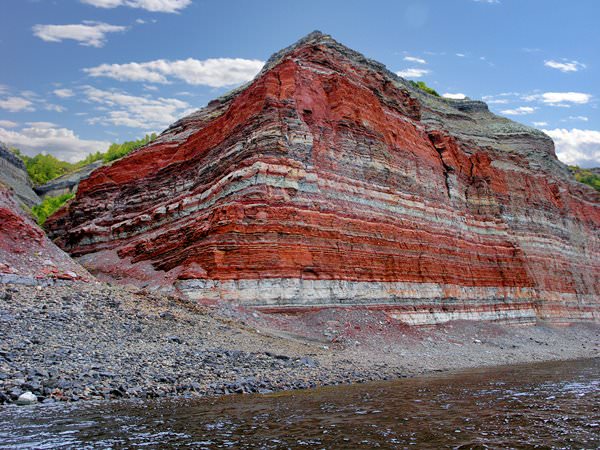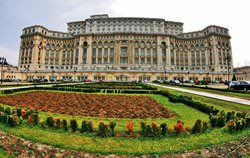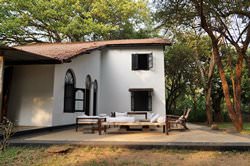Air pollutants. Volcanoes that changed the face of the Earth
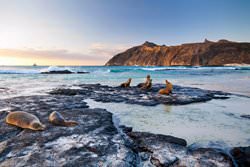
Siberian Traps, Russia
One of the world's largest igneous provinces was formed in Siberia more than 252 million years ago. The eruption happened then. It is considered one of the largest in the history of the existence of our planet. According to only approximate estimates of researchers, the volume of lava that came to the surface of the earth was about 4 million cubic kilometers. The large igneous province occupies the entire territory of Western Siberia. Its area can be compared with Western Europe.
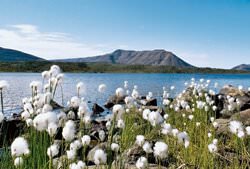 Such a serious eruption led to the death of 70% of the animals that existed on the planet. No more than 4% of marine animals survived the disaster. It is to this incredible eruption that Western Siberia owes its present unique appearance. It also influenced the formation of landscapes in the surrounding areas. A chain of basalt volcanoes formed in the territory of Transbaikalia and Mongolia after the eruption. The highest degree of trap formation is observed in the area of the city of Norilsk. Most likely, this is where the center of the trap was located millions of years ago.
Such a serious eruption led to the death of 70% of the animals that existed on the planet. No more than 4% of marine animals survived the disaster. It is to this incredible eruption that Western Siberia owes its present unique appearance. It also influenced the formation of landscapes in the surrounding areas. A chain of basalt volcanoes formed in the territory of Transbaikalia and Mongolia after the eruption. The highest degree of trap formation is observed in the area of the city of Norilsk. Most likely, this is where the center of the trap was located millions of years ago.
Dekan Traps, India
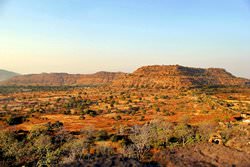
Dekan Traps, India
Description
There are many igneous provinces in India. One of the largest igneous provinces is located on the Deccan Plateau. These traps are the second largest in the world by area. They cover an area of about 500,000 square kilometers. The Deccan Traps were formed more than 60 million years ago. The researchers estimate that about 512 cubic kilometers of lava were poured onto the earth's surface during the eruption. Scientists were able to determine the approximate location of the epicenter of the eruption. It is the so-called Reunion hotspot. It is located under the island of Reunion. Description
Ontong Java Plateau, Solomon Islands
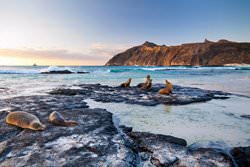
Ontong Java Plateau, Solomon Islands
Description
The giant Ontong Java Plateau is located in the Pacific Ocean. Its area is about 2 million square kilometers. Trapp can be compared in size to Alaska. It is located near the Solomon Islands. Trapp had a direct influence on the formation of this picturesque archipelago. The thickness of the trap is 30 kilometers in some places. According to rough estimates, the eruption of igneous rocks took place at this point of the earth about 125 million years ago. The period of activity lasted for more than one hundred years. About 100 million cubic kilometers of lava were thrown to the surface of the earth during this time. Description
Plateau of Parana-Etendeca, Brazil
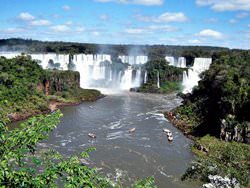
Plateau of Parana-Etendeca, Brazil
Description
The large igneous province of the Paraná-Etendeka is located in Brazil. It formed about 132 million years ago. The eruption occurred during this period. Some researchers tend to consider it the largest in the history of the earth. The fact is that magma traps of the same period were also found on the other side of the Atlantic Ocean. They were found in the territory of modern Namibia and Angola. Researchers tend to believe that the eruption was very large-scale. They believe that it has spread even to the other side of the Atlantic Ocean. Description
Trapp Columbia River, United States
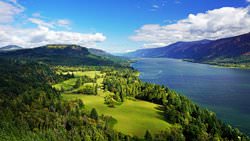
Trapp Columbia River, United States
Description
One of the youngest magma traps on the planet is located in the United States. This is the Trapp Columbia River. It began to form about 15 million years ago. The Yellowstone hotspot became the center of magmatism. The area of the magma trap is about 163,700 square kilometers. It extends to several states: Washington, Idaho, Oregon, California, and Nevada. Description
Rajmahal Traps, India
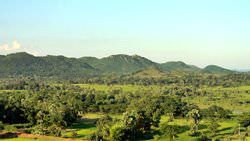
Rajmahal Traps, India
Description
Rajmahal Traps are located in India. They are also of great interest to both researchers and ordinary travelers today. They are found in Eastern India. The area of the magma plateau is about 4,100 square kilometers. A large-scale lava eruption occurred in this area of the planet at the beginning of the Cretaceous period. The Kerguelen hotspot was the epicenter of the eruption. Rajmahal Hill is the most striking reminder of the massive eruption. Its height is 608 meters. Description
Trap Kivino, Canada
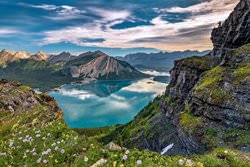
Trap Kivino, Canada
Description
Large igneous province Kevino is located in Canada. It is located in the Canadian Shield region, near Lake Superior. This formation originated in the Late Precambrian period. It has a rather complex structure. It is distinguished by a variety of breeds. According to some modern researchers, the sea was located in these places during the formation of the magma trap. Some features of the structure suggest that they could only have formed underwater during a lava eruption. Description
British-Arctic Trap Formation, Scotland
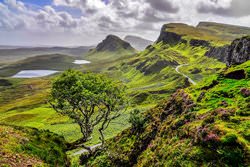
British-Arctic Trap Formation, Scotland
Description
The British-Arctic Trap Formation occupies a vast area. It extends to the Faroe Islands and the British Isles, Greenland, and Iceland, as well as the island of Jan Mayen. This formation began to form more than 65 million years ago during the Early Cretaceous period. The formation of the huge magma trap lasted for more than 20 million years. It was held in four stages. The last of them ended about 40 million years ago. Description
Popular cities

Beirut
70 hotels
70 hotels

Cancun
62 hotels
62 hotels

Florence
475 hotels
475 hotels

Hvar
41 hotels
41 hotels

Lima
123 hotels
123 hotels

Miami
60 hotels
60 hotels

Paphos
61 hotels
61 hotels

St Petersburg
313 hotels
313 hotels

Stuttgart
117 hotels
117 hotels

Zaragoza
66 hotels
66 hotels
Volcanoes that changed the face of the Earth - interactive map
OrangeSmile.com - online travel reservation expert providing reliable car rental and hotel booking services. We feature more than 25.000 destinations with 12.000 rental offices and 200.000 hotels worldwide.
Secure Server




OrangeSmile B.V. - Hotel Booking Worldwide
Head office: Weegschaalstraat 3
Eindhoven,
5632 CW
Netherlands
+31 40 40 150 44
Copyright © 2002 -
OrangeSmile Tours B.V. | OrangeSmile.com | Under the direction and management of IVRA Holding B.V. - Registered at Kamer van Koophandel (KvK), The Netherlands No. 17237018


